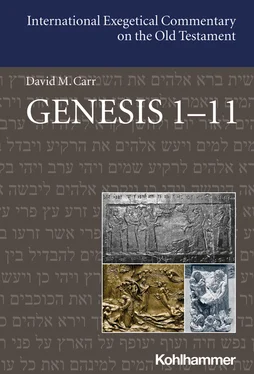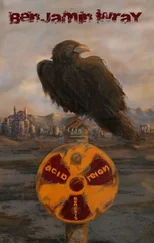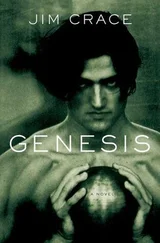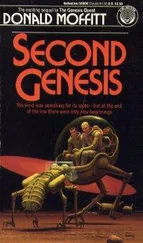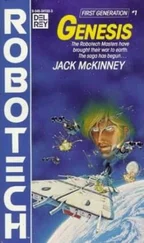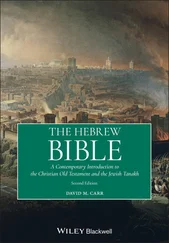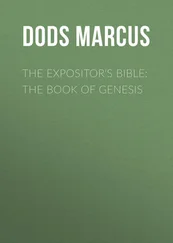A new element within Gen 1 first seen here is God’s blessing these sea and air creatures, which starts with a direct blessing of the sea creatures “be fruitful and multiply and fill the waters in the seas” before proceeding, almost as an afterthought, to include a wish that “the birds multiply in the earth.” Much as the “rule” of the stars on day four anticipated human rule, so this blessing, particularly the blessing of sea-swarming creatures, verbally anticipates God’s similar, though more extensive, blessing of humans (1:28). Both sea-air creatures and humans are “created” (ברא), and both are “blessed” (ברך), with the correspondence in the beginnings of both words ברא/ברך possibly implying a relationship between divine “creating” and “blessing” sea-air creatures and humans. 76
Gen 1:24–25. The Creation of (non-human) land animalsThe description of God’s creation of land animals, in contrast, seems designed to distinguish God’s making (עשה) of animals from God’s creation (ברא) of humans. The initial divine creation order in 1:24 describes their emergence more on the analogy of plants than even the sea and air creatures of 1:20–23, with God saying “let the earth bring forth living beings” (1:24), much like God had said on day three “let the earth sprout forth grassy plants” (1:11). Just as both God’s speech about plants (1:11) and their subsequent creation (1:12) focused on the creation of seed-bearing plants “each according to its kind” and fruit bearing trees “each according to its kind,” so also the creation of animals features a divine speech and following act outlining the creation of land creatures “each according to its kind.” Moreover, the three-part division among land creatures in Gen 1:24–25—domesticated animals (בהמה), creeping things (רמש 1:24; כל־רמש האדמה 1:25), and wild animals (חיתו־ארץ last in 1:24; חית הארץ first in 1:25)—corresponds to the three-part division among the sea/air creatures on day four—the great sea monsters (התנינם הגדלים), creatures swarming in the waters (נפש החיה הרמשת אשר שרצו המים), and all winged birds (עוף כנף). 77
Unlike the creation of plants, the initial execution of God’s creation order for land creatures does not describe the earth as extruding animals (cf. 1:12). Instead, God himself “makes” (עשה) the animals. This makes their creation more similar to the creation of sea-air creatures on the one hand (1:21) and humans on the other (1:27), though in both of these other cases the text uses the special divine creation word ברא for the creation process.
Finally, the land creatures do not receive the multiplication blessing given to both sea-air creatures (1:22) and humans (1:28). This may be because land creatures share their habitat with humans, and Gen 1 does not want to suggest that God originally intended for non-human land creatures to multiply and thus successfully compete for limited land with the humans who are the pinnacle of creation. Such considerations did not apply to swarming sea creatures, or even—to the same extent—for birds of the air that alight on land only part of the time. 78This concern with distinguishing land creatures from the humans with whom they share habitat will resurface in 1:29–30, where God designates a different range of foods for each. 79
Gen 1:26–28. The Creation and Blessing/Commissioning of HumanityMuch of what preceded prepared for the description in these verses of God’s creation of “humanity.” Gen 1:3–24 does not describe the creation of the cosmos in general, but instead focuses on elements that contribute to the creation of the human biome: land apart from sea, the specific plants that will later be designated for human consumption (1:11–12, cf. 1:29), the heavenly bodies to help humans keep time (1:14–19), land animals (1:24–25), etc. In addition, the overall picture of God as in supreme control of the creative process (1:3–25) prepares for God’s commissioning of humanity in 1:26b, 28 for godlike rule over the cosmos that God has created. Finally, as noted across the discussion of Gen 1:3–25, specific elements of this creation description anticipate themes in 1:26–30. The somewhat unexplained (see above) “rule” of sun and moon (1:16) and then all heavenly bodies (1:18) anticipates human rule in 1:26, 28. God’s blessing of the sea and air creatures in 1:22 anticipates the longer blessing directly given to humans in 1:28. The focus on seed and fruit-bearing plants in 1:12 prepares for the eating instructions given to humans as opposed to animals in 1:29–30. In sum, Gen 1:26–30 is not only the final and most lengthy creation-act description, it is also the thematic endpoint of the preceding creation description.
At the same time, the description of humanity’s creation in Gen 1:26–30 diverges in numerous respects from what preceded. We see this already in the divine speech of 1:26. Though other creation acts all started with a divine speech, all of them used third person Hebrew jussive verbs to express God’s wish for a certain state of affairs: “let there be light” or “let the waters swarm.” In contrast, Gen 1:26 opens with a Hebrew cohortative where God calls on an unspecified group, probably to be understood as God’s divine council, 80to join in this “making” (עשה): “let us make humankind.” Where other creation speeches stated God’s wish for a certain thing to happen, the verb “make” in 1:26 is an unusual and unprepared formation calling for direct divine involvement of the addressed beings (the council) in creation. The very uniqueness of this formulation, otherwise seen (within the Bible) in non-Priestly primeval history materials (Gen 3:22; 11:7), emphasizes from the outset the importance of God’s creation of humans. 81
Other elements of Gen 1:26ff. similarly diverge from the narrations of preceding creation acts to highlight God’s creation of humans as the goal toward which the preceding chapter has been oriented. Where the other reports of creation of living things implied their indirect production by land or sea “according to their kind(s)” (Gen 1:11–12, 20–21, 24), God’s speech in Gen 1:26 describes God calling on God’s council to join in making humanity “as our image, similar to our likeness.” 82Where God’s previous creation speeches in Gen 1 are followed by formulae of correspondence and then narrations of how God’s intentions were executed, Gen 1:26 is followed by a doubled description of God’s own creation of humanity in 1:27, with this being a heightened, semi-poetic speech that highlights the importance of this event. The blessing then given to humans in 1:28 contrasts with that given to water and air creatures in 1:22 in being more explicitly addressed to humans (ויאמר להם “and said to them”), being longer, and including the call for humans to subdue the earth and rule other creatures. The instructions distinguishing human from animal food in Gen 1:29–30a have no precedent in the preceding chapter. Finally, the whole of 1:26–30a—including the blessing and instructions about food—is followed by the correspondence formula (ויהי כן; 1:30b) that previously in Gen 1 was just focused on the creation of elements in accordance with God’s instructions. In sum, virtually every part of Gen 1:26–30 diverges from corresponding parts of the descriptions of previous creation acts in Gen 1:3–25.
Perhaps the most remarkable element in Gen 1:26–31, certainly the most debated, is what is intended in the description of God’s creation of humanity as God’s image in 1:26–27. Though this commentary is not the context for thorough review of centuries of interpretation of this section, a few central insights can be summarized, especially on how this motif is subtly developed within Gen 1 and other parts of the Priestly primeval history (Gen 5:1b–2; 9:6) in relation to ancient Near Eastern precursors.
Читать дальше
